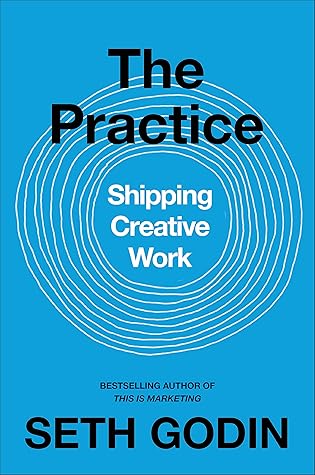More on this book
Community
Kindle Notes & Highlights
Creative, because you’re not a cog in the system. You’re a creator, a problem solver, a generous leader who is making things better by producing a new way forward.
Lost in all the noise around us is the proven truth about creativity: it’s the result of desire—the
Creativity is a choice, it’s not a bolt of lightning from somewhere else.
Erik Britt-Webb liked this
engaging in the practice, you’ll honor your potential and the support and kindness of everyone who came before you.
We simply need to find the courage to be more creative. The forces that are holding us back have long been unseen, but we can see and understand them and begin to do our work.
The recipe for recipes is straightforward: good ingredients, mise en place, attention to detail, heat, finish. You do them in order. But when we create something for the first time, it’s not as linear, not easily written down.
The industrial system we all live in is outcome-based. It’s about guaranteed productivity in exchange for soul-numbing, predirected labor.
Creativity doesn’t repeat itself; it can’t. But the creative journey still follows a pattern.
The Bhagavad-Gita says, “It is better to follow your own path, however imperfectly, than to follow someone else’s perfectly.”
If we care enough, we keep looking for that feeling, that impact, that ability to make a difference. And then we look harder.
Art is something we get to do for other people.
A good process can lead to good outcomes, but it doesn’t guarantee them.
All criticism is not the same.
For the important work, the instructions are always insufficient.
Artists make change happen. Artists are humans who do generous work that might not work. Artists aren’t limited to paint or museums.
You were born ready to make art. But you’ve been brainwashed into believing that you can’t trust yourself enough to do so.
Art is the generous act of making things better by doing something that might not work.
We become what we do.
“Do what you love” is for amateurs. “Love what you do” is the mantra for professionals.
Imposter Syndrome Is Real It’s a sign that you’re healthy and that you’re doing important work. It means that you’re trusting the process and doing it with generosity.
The only choice we have is to begin. And the only place to begin is where we are. Simply begin.
The world conspires to hold us back, but it can’t do that without our permission.
Our world is long on noise and short on meaningful connections and positive leadership.
Artists have a chance to make things better by making better things. Contributing work to those whom they serve. Turning on lights, opening doors, and helping us not only connect to our better nature, but to one another.
Hoarding your voice is based on the false assumption that you need to conserve your insight and generosity or else you’ll run out of these qualities.
A scarcity mindset simply creates more scarcity, because you’re isolating yourself from the circle of people who can cheer you on and challenge you to produce more.
Ideas shared are ideas that spread, and ideas that spread change the world.
turns out that the misfit, the fifth hammer, was the secret to the entire sound. It worked precisely because it wasn’t perfect,
The fifth hammer is the one that’s not proven, not obvious, or not always encouraged.
True learning (as opposed to education) is a voluntary experience that requires tension and discomfort (the persistent feeling of incompetence as we get better at a skill).
Kiasu is the Hokkien word for “the fear of being left behind” or not getting enough.
confidence varies from person to person and from day to day. Confidence is a feeling, and feelings are difficult to measure and control.
We don’t have to be victim to our feelings.
Positive people are more likely to enjoy the practice. They’re not wasting any time experiencing failure in advance. Negative artists engage in the practice as well, but they suffer more.
People don’t know what you know, don’t believe what you believe, and don’t want what you want. And that’s okay. It’s impossible to be appropriately generous to everyone. Because everyone is different.
“It’s not for you” is the unspoken possible companion to “Here, I made this.”
If you’re on a journey but it’s rarely causing a spark, you probably need to make better work. Braver work. Work with more empathy.
Enrollment is acknowledgment that we’re on a journey together.
The practice demands that we seek to make an impact on someone, not on everyone.
Gratitude isn’t a problem. But believing we’re owed gratitude is a trap.
The time we spend worrying is actually time we’re spending trying to control something that is out of our control.
There’s no promise that the world cares about your mission.
Too often, the market pushes creators to give away their work. And too often, we come to believe that giving it away, removing money from the interaction, is the most generous thing we can do. But that’s not the case. Money supports our commitment to the practice. Money permits us to turn professional, to focus our energy and our time on the work, creating more impact and more connection, not less.


